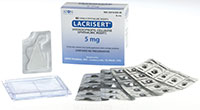 With the dry eye treatments currently available there is no need to continue suffering from dry eyes. Dry eye syndrome is probably the most common, treatable cause of suffering reported by our patients. Fortunately, current dry eye therapy is very successful at relieving these symptoms.
With the dry eye treatments currently available there is no need to continue suffering from dry eyes. Dry eye syndrome is probably the most common, treatable cause of suffering reported by our patients. Fortunately, current dry eye therapy is very successful at relieving these symptoms.
Most Common Dry Eye Symptoms
Contact lens intolerance is one of the most common causes of suffering from dry eyes. Patients with dry eyes either don’t wear contact lenses at all or experience very limited wearing time, often eagerly removing them as soon as possible.
End of Day Discomfort
As the day goes on your eyes start to dry out and become irritated. This is also why contact lens wearers experience discomfort at the end of the day. When you sleep your eye repairs the damage caused by dry eyes and the cycle repeats the next day. This end of day discomfort usually causes watery eyes.
Watery Eyes
It sounds counter-intuitive but watery eyes, especially in the afternoon or evening, are a sign of dry eyes. As the day goes on the lack of tears cause corneal irritation. When the cornea is irritated it sees this as something in the eye that needs to be flushed out. Your eye starts to produce watery tears to flush out the perceived foreign object. These are known as reflex tears, tears that are a response to an immediate stimulus. Reflex tears lack the wetting properties of normal tears and actually contribute to the damage caused by dry eyes.
Misconceptions of Dry Eye Syndrome
Most patients think the mainstay of dry eye therapy is artificial tears. While artificial tears are helpful and beneficial to dry eye sufferers they represent only a small part of the available treatment options. Artificial tears require regular and frequent application to be effective. We now have better therapies to treat all stages of dry eye syndrome.
How do I Know if Dry Eye Treatment is Right for Me?
- If you find yourself using artificial tears three or more times a day
- You are not able to use artificial tears often enough to provide all-day relief
- You have Sjogren’s Syndrome or suspect you may have it
- Cannot wear contact lenses all-day
- You stopped wearing contact lenses because they were uncomfortable
- Experience tearing and/or discomfort near the end of the afternoon
What Dry Eye Treatment Options are Available?
Most patients will experience the most successful treatment by using multiple dry eye treatment options. Some of the most helpful and common treatment options are;
- Artificial tears
- Scleral contact lenses treat dry eye Syndrome
- Punctal occlusion
- Rx Medication such as Xiidra and Restasis
- Omega 3 Fatty Acids
- Adjusting the contact lens brand and/or fit
Does Insurance Cover Dry Eye Treatment?
Dry eye diagnosis and treatment is covered by major medical insurance.
All medical insurance companies cover the diagnosis and treatment of dry eye syndrome. There are many new dry eye treatments available to us.
How Do I Get Started?
The best way is to call either the Total Eye Care – Colleyville office at 817.416.0333 or call the Total Eye Care – Keller office at 817.431.4900. You can also schedule an appointment with our doctors online.

 Right when we want to free ourselves of glasses and enjoy the warmth of summer, the dry, air-conditioned air makes our dry eyes worse making it more difficult to wear contact lenses. Symptoms of dry eye syndrome peak during the summer months. Thankfully,
Right when we want to free ourselves of glasses and enjoy the warmth of summer, the dry, air-conditioned air makes our dry eyes worse making it more difficult to wear contact lenses. Symptoms of dry eye syndrome peak during the summer months. Thankfully, 
